- Blog
- Discount Pricing Strategy: 18 Examples That Actually Convert
Discount Pricing Strategy: 18 Examples That Actually Convert
Table of Contents
Here’s the deal: 62% of shoppers are actively looking for a discount before checking out. So if you’re not offering the right kind of incentive, you might be handing those potential buyers to your competitors.
In this blog post, you’ll discover:
- What discount pricing is (and what it’s really for)
- The goals behind strategic discounting
- 18 high-performing discount pricing examples
Let’s dive in.
What is discount pricing?
Discount pricing is more than just slashing prices. By offering targeted discounts, you can drive sales, attract new customers, offload slow-moving inventory, and boost customer lifetime value.
Whether it’s a flash sale or a loyalty offer, each discount type serves a unique purpose in the customer journey.
Why use discount pricing?
OK, so why should you really use discount pricing? Let’s break down what you’re actually trying to accomplish when you offer discounts:
- Boost sales: The obvious one. Discounts create urgency and reduce friction.
- Move old stock: Got seasonal products or slow movers? Discounts help free up shelf space.
- Increase brand exposure: A time-limited promo can bring in fresh eyes and build awareness.
- Attract first-time customers: Price drops lower the barrier to entry, especially if they’re paired with a sign-up incentive.
The most common discount sizes
Chances are, you’ve spotted these while exploring different ecommerce stores. Here are the ones you’ll see most often:
- 5%: Small, but psychologically effective.
- 10%-15%: A popular range that still leaves you a good margin.
- 20%: A big enough drop to turn heads.
Remember, a bigger discount is not always better. Your discount should align with your margins and your goals.
Types of discount pricing
Here are the four most common discount types and what they’re best for:
- Percentage discounts (e.g., 10% off): Simple, familiar, and effective for boosting conversions sitewide or during flash sales.
- Fixed-price discounts (e.g., $5 off): Best for lower-priced products where a dollar amount feels more impactful than a percentage.
- Bundled discounts (e.g., Buy 2, Get 1 Free): Encourages bigger carts and helps move more inventory per order.
- Seasonal discounts (e.g., Black Friday, back-to-school): Tied to specific events or holidays, these create urgency and drive quick spikes in traffic and sales.
Each one serves a different goal, so pick what aligns best with your campaign objective.
18 discount pricing examples
Let’s explore how the pros are using discount pricing and the strategies that make these approaches so effective.
1. First-time customer discount
By offering a special deal for first-time shoppers, you give them a reason to trust you and hit “buy.” Most marketers ask for an email in return, which is perfect for building your email list.
BLK & Bold offers a 15% discount in exchange for an email signup. Clean, simple, and high-converting.
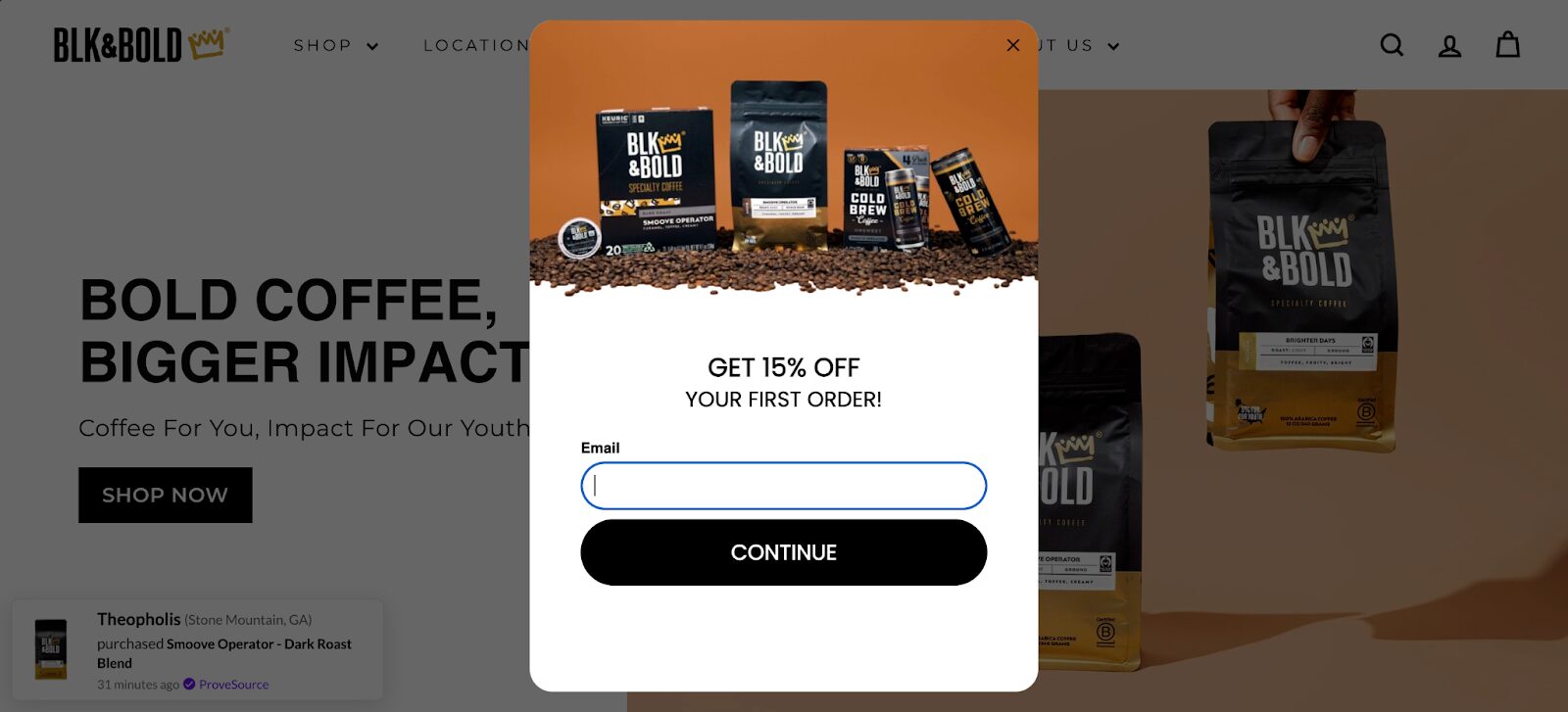
Tip: Greet new visitors with a welcome popup that highlights your offer. Looking for inspiration? These popup templates can help spark ideas.
2. Promotional discount
Promotional discounts are limited-time deals tied to events like holidays, store anniversaries, or even made-up holidays. They spark a sense of urgency and drive quick sales.
Beneath Your Mask ran a seasonal promo and pushed a discount tied to a campaign, great for driving both engagement and conversions.
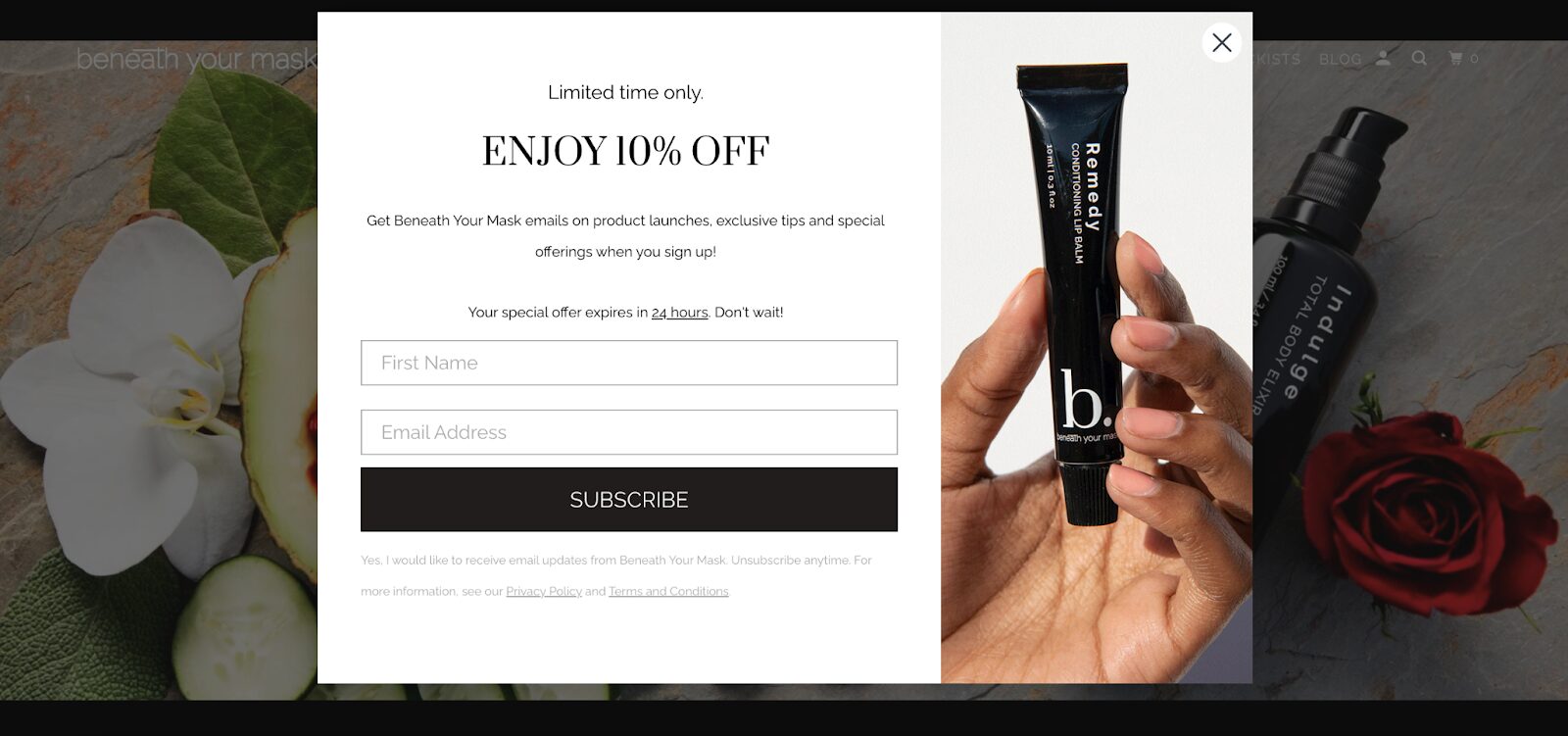
3. BOGO discount
The BOGO discount pricing strategy is one of the best ways of upselling.
Customers love feeling like they’re getting something “extra,” whether it’s a freebie or a second item at a deep discount. It works especially well with low-cost or consumable products.
Pela Case ran a “Buy 1 Get 1 Free” offer on their full-screen popup, which is perfect for eco-conscious shoppers stocking up on sustainable phone cases.
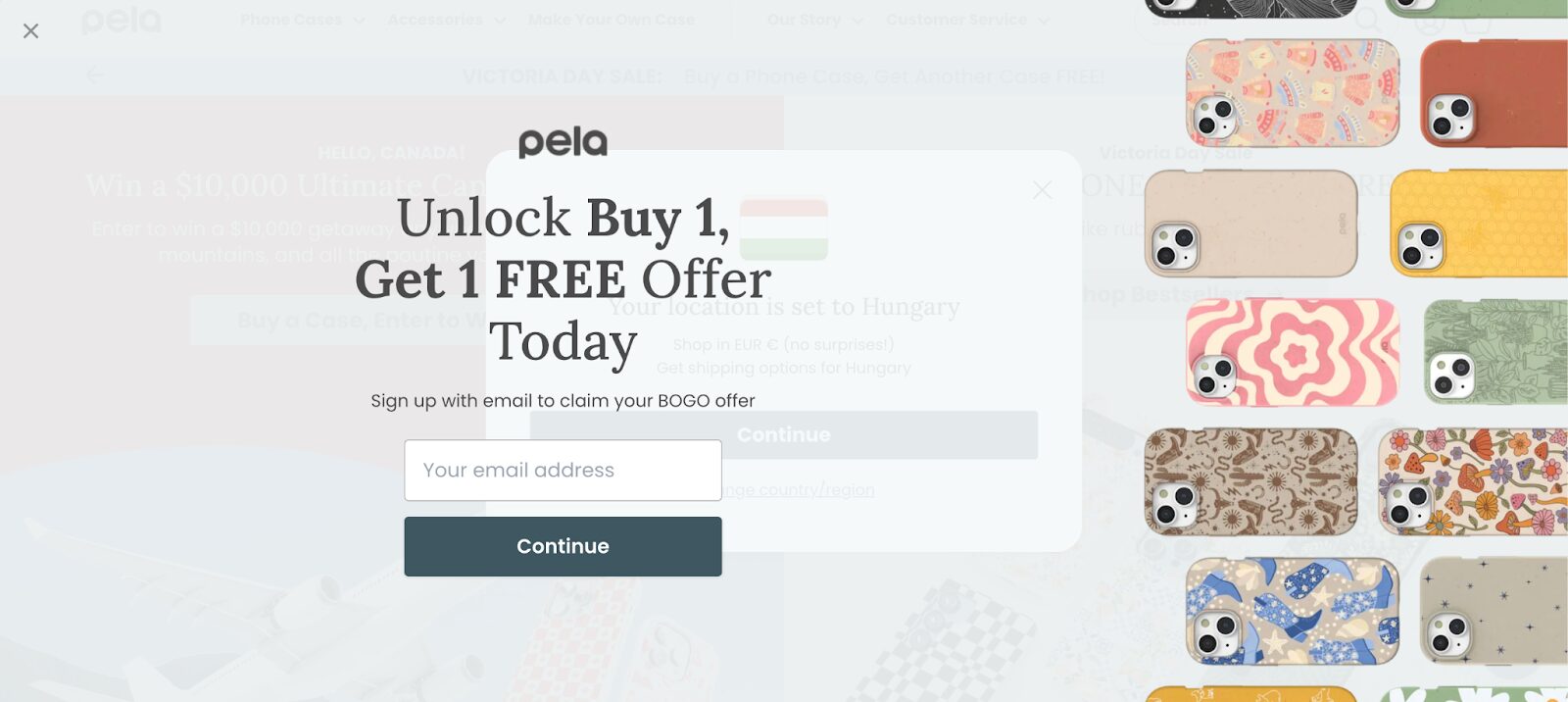
Tip: Full-screen popups offer maximum visibility and boast an average conversion rate of 14.40%. Want to discover why they’re so effective? Read the full article here.
4. Volume discount
Our list of effective discount pricing strategies wouldn’t be complete without volume discounts.
Volume-based pricing encourages bulk buying and increases your AOV (Average Order Value). Great for B2B or replenishable goods.

Tip: Display the savings per unit as customers add more items to their cart on a Dynamic Shipping Bar.
5. Abandoned cart discount
More than 70% of online shopping carts are left behind. A well-timed discount sent via email or shown as an exit-intent popup can help recover lost sales.
Obvi promoted a limited-time Black Friday deal to users who were about to leave the site without checking out, offering them 25% off along with free gifts.
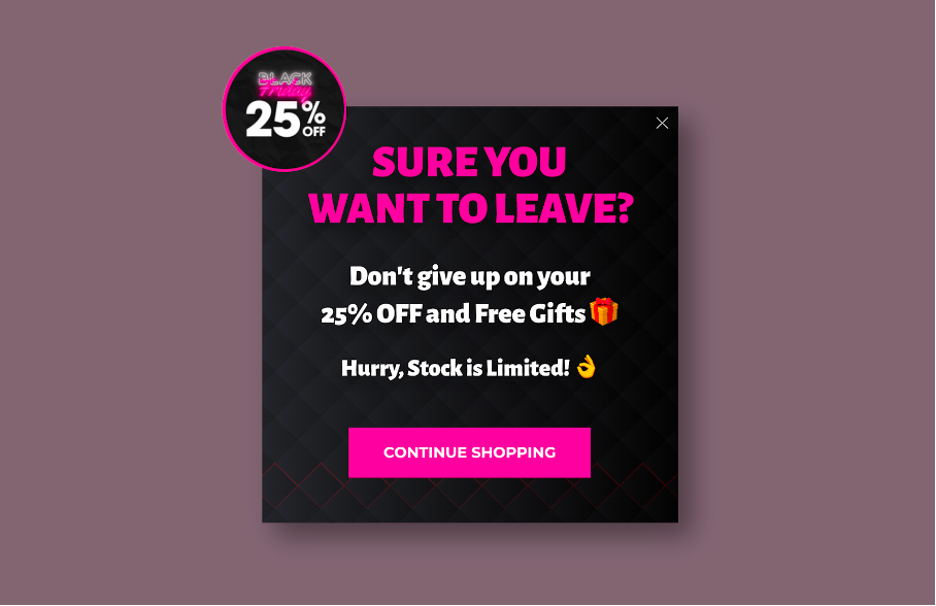
6. Flash sale discount
Flash sales are short promotions that encourage fast decision-making and create a strong sense of urgency. No wonder they can lead to a 35% lift in transactions!
They’re often used to clear inventory or capitalize on peak shopping periods. In this example, Loft is running a flash sale with 60% off.
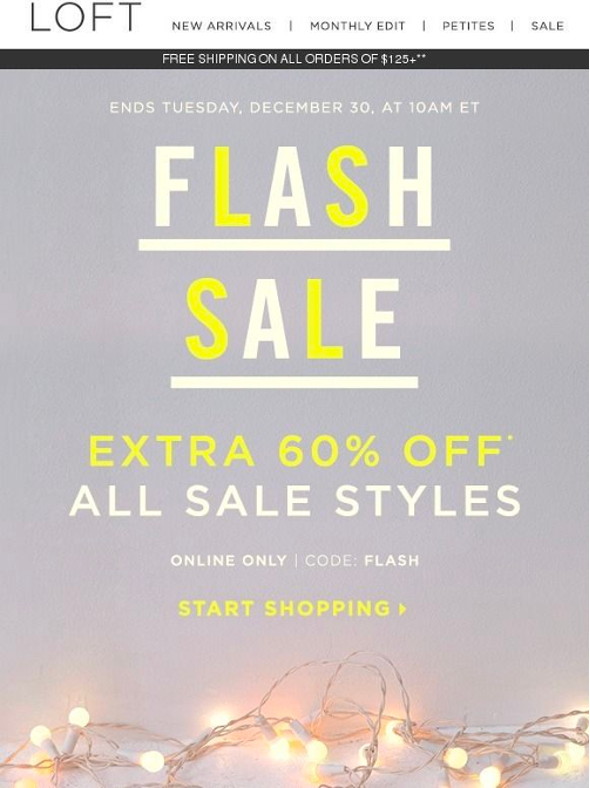
7. Product bundling discount
Bundling groups of related products can raise your average order value while improving perceived value for the customer.
Bruvi offers a smart “Build Your Bundle” feature that can save customers up to $120, which makes it feel like a real deal.
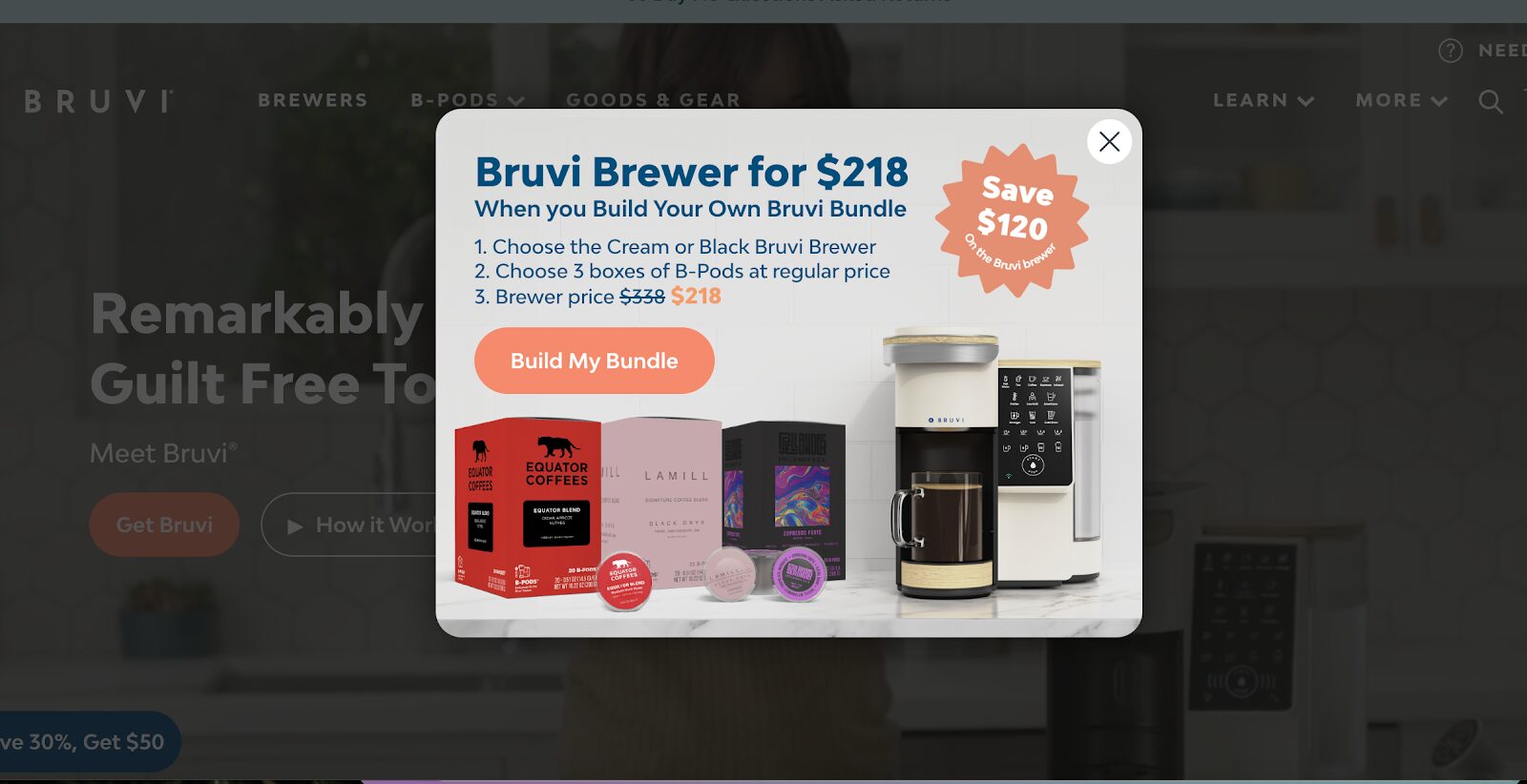
Tip: Try different product combinations to see what resonates. Test and track performance to find out which bundles your customers are most likely to buy.
8. Free shipping discount
Free shipping remains one of the top incentives for online shoppers. You can offer it sitewide or above a minimum order threshold to boost average spend.
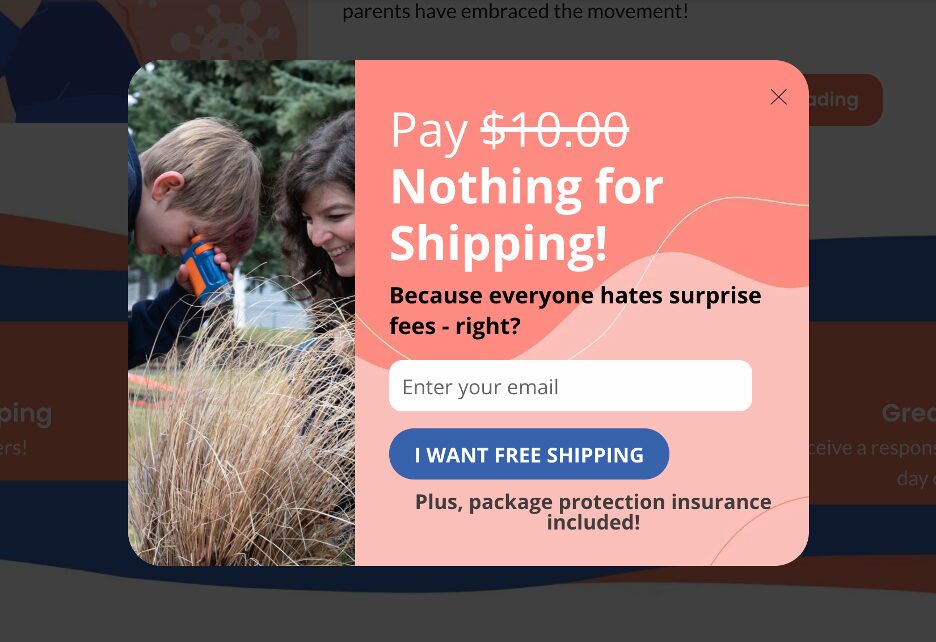
Tip: Use a progress bar at checkout to encourage customers to unlock free shipping.
9. Mystery discount
A mystery offer sparks curiosity and increases engagement. Customers reveal their discount only after clicking or taking an action, such as signing up.
Nexus Nutrition greets visitors with a mystery discount that reveals the percentage after engagement.

Want to try it out? Explore these ready-to-use popup templates to launch your own mystery discount.
10. Loyalty discount
Loyalty discounts reward returning customers and are often tied to a points-based program where shoppers earn rewards with every purchase.
You can also offer a discount immediately after checkout to encourage repeat visits and build long-term customer relationships.
For example, Urban Outfitters gives customers a £5 discount once they collect 100 points through their loyalty program.
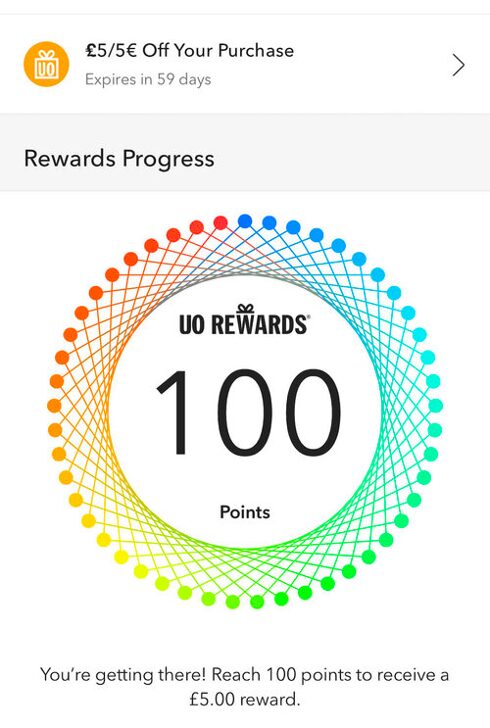
11. Buy one, give one discount
This type of discount pricing strategy donates an item to someone in need for every product purchased. It allows customers to support a cause simply by shopping.
Not only does it create a meaningful social impact, but it also builds positive brand perception. Bombas uses this model by donating one pair of socks for every pair sold.
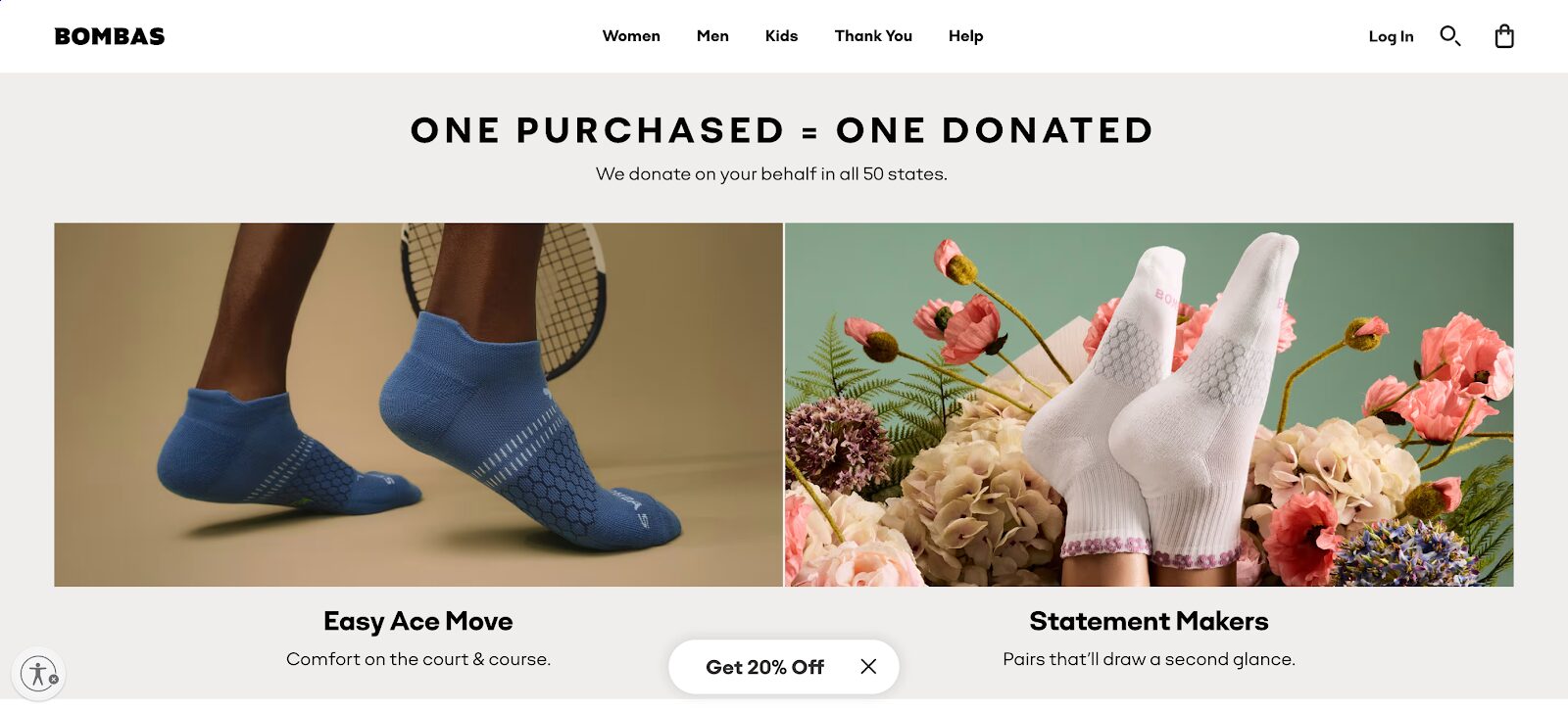
Discover how Bombas turned socks into a success story.
12. Referral discount
Referral programs reward existing customers for bringing in new ones and boosts loyalty. A dual-sided discount—one for the referrer and one for the new buyer—works best.
Girlfriend Collective offers $20 off ($10 off for each party) in their referral program.
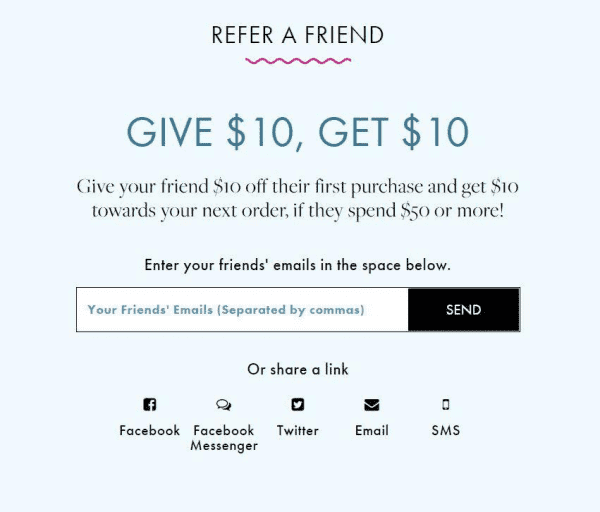
13. Early bird discount
Provide an exclusive discount to customers who buy early or pre-order upcoming products. This works especially well for launches or time-sensitive promotions.
Tanit used this strategy for their Black Friday campaign, branded as Change Friday, offering VIP email subscribers up to 25% off, gift boxes, and bundled deals.
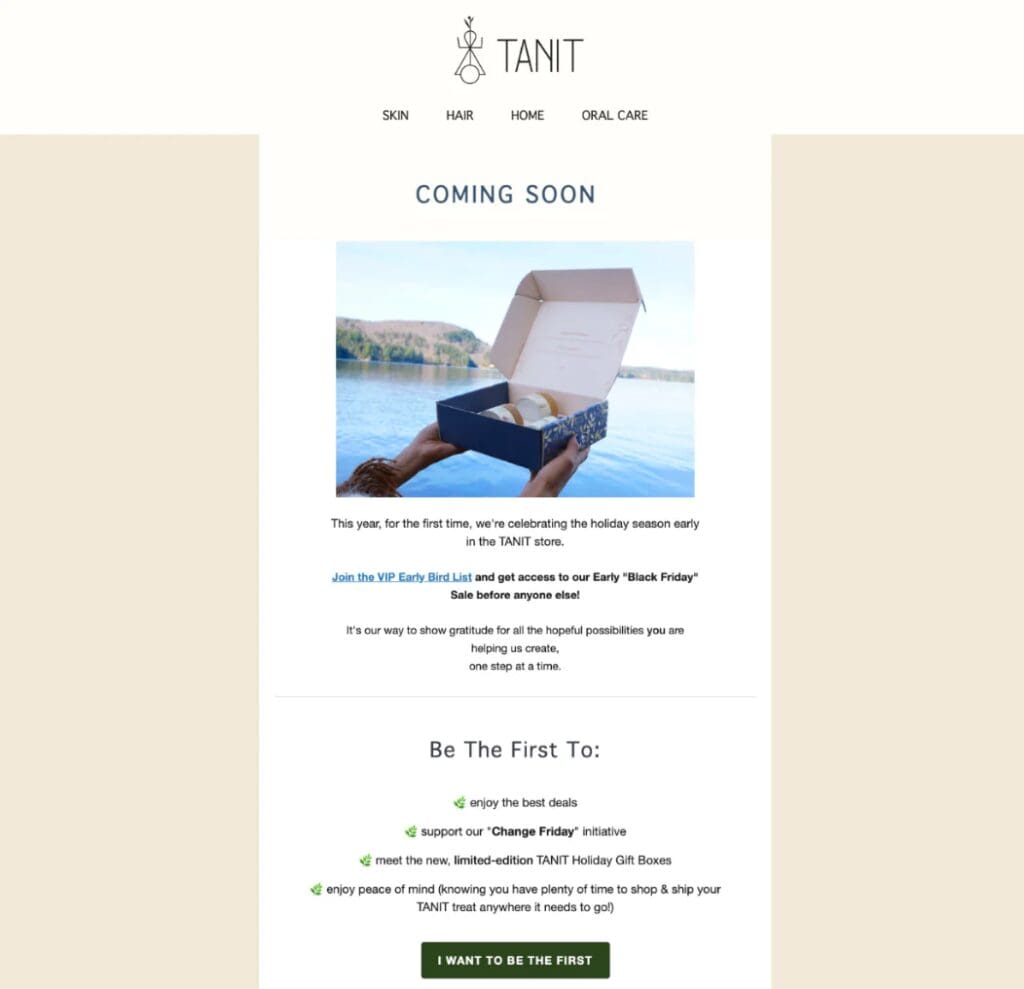
14. Gamified discounts
Gamified discounts turn savings into a fun, interactive experience. Instead of simply offering a coupon, shoppers get the chance to win one, boosting engagement and conversions.
Tools like a spin-to-win wheel can display a range of discounts (say, 5% to 50%). Shoppers are often tempted to try their luck, and even smaller rewards still feel like a win.
Since participation typically requires an email, this tactic also helps grow your subscriber list while keeping visitors entertained.
Hit play and discover how gamification can take your campaigns to the next level!
15. Membership or VIP discounts
Provide special discounts to members or VIP customers who either pay for access or reach a specific spending level.
For example, some brands give VIPs early access to their biggest sale events of the year, which is a smart discount strategy—people love the exclusivity of getting perks regular shoppers can’t access.
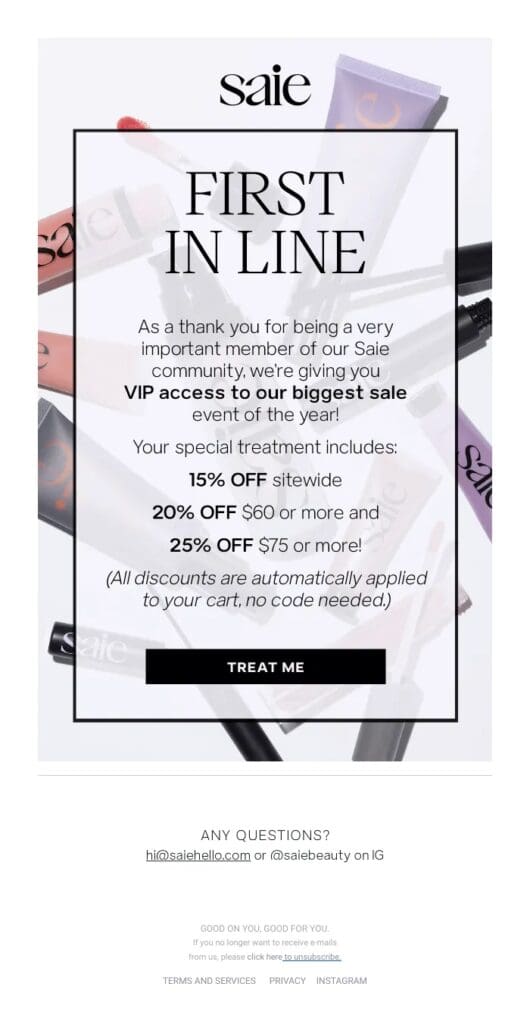
16. Influencer-based discounts
Tailor discounts to the specific influencer who referred the customer. These personalized codes build trust and make it easy to track results from each partnership.
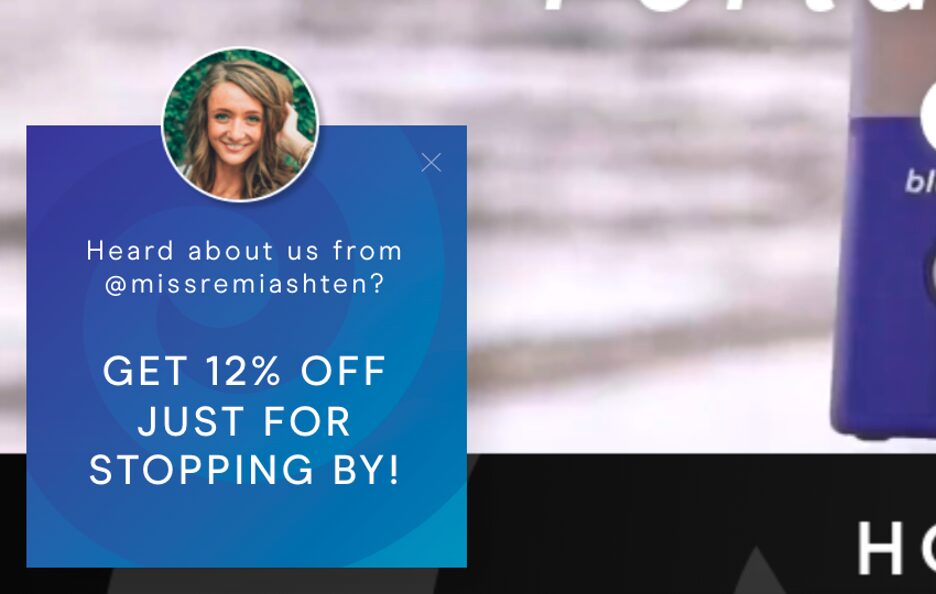
Tip: Feature a message with a tailored code, like “Use JESSIE15 for 15% off” on your popup, paired with the influencer’s photo or quote for added credibility.
17. Free gift discount
Offering small, surprise gifts can be an affordable way to boost conversions and build customer loyalty.
For instance, apparel brand INTO THE AM uses a popup to automatically give shoppers a free gift when they add select items to their cart.
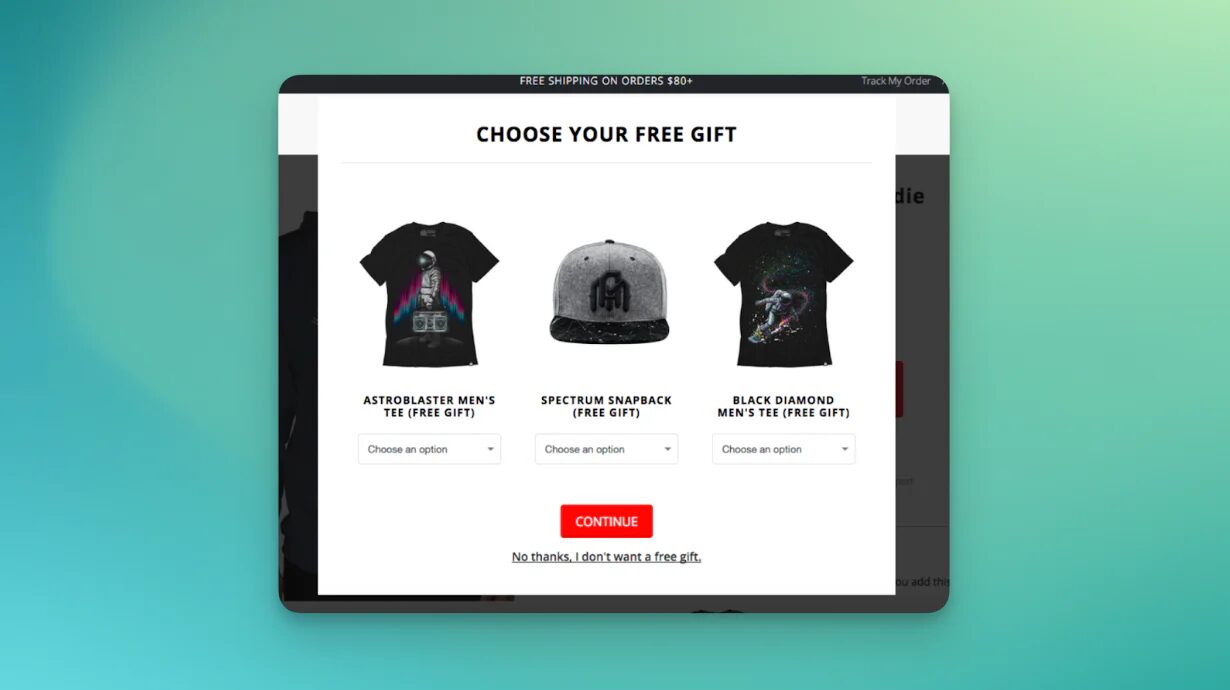
18. Student discount
Offering exclusive discounts to specific groups, like students, teachers, healthcare workers, or military members, can strengthen trust and foster long-term loyalty.
For example, many brands provide a 15% discount to students as a way to support their budget-conscious lifestyles and create positive brand connections early on.
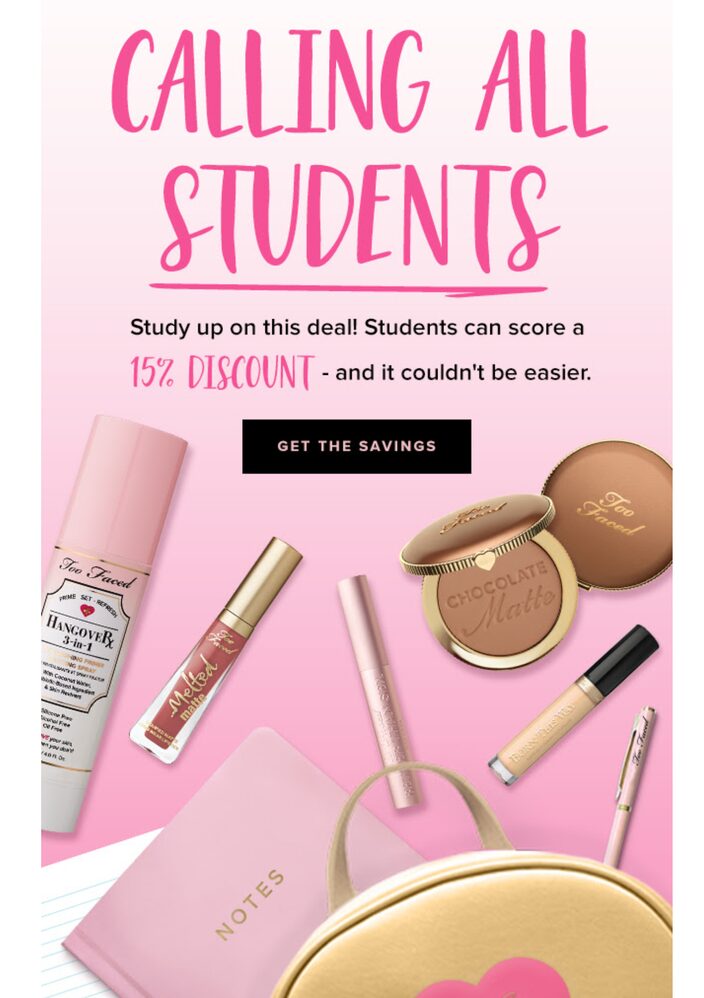
How to offer discounts with OptiMonk?
Ready to turn more visitors into customers with smart discounts? Here’s a step-by-step guide on how to set up a high-converting discount campaign using OptiMonk.
Step 1. Choose a popup that fits your brand
Explore OptiMonk’s library of 300+ popup templates and choose one that matches your brand’s vibe. Whether your style is fun, minimal, or eye-catching, there’s a design that will fit perfectly.
Step 2. Customize your popup
Time to make it yours. You can customize the text, images, fonts—and of course, the discount details—with our easy to use drag-and-drop editor. Add your branding to make it feel like a natural part of your site.
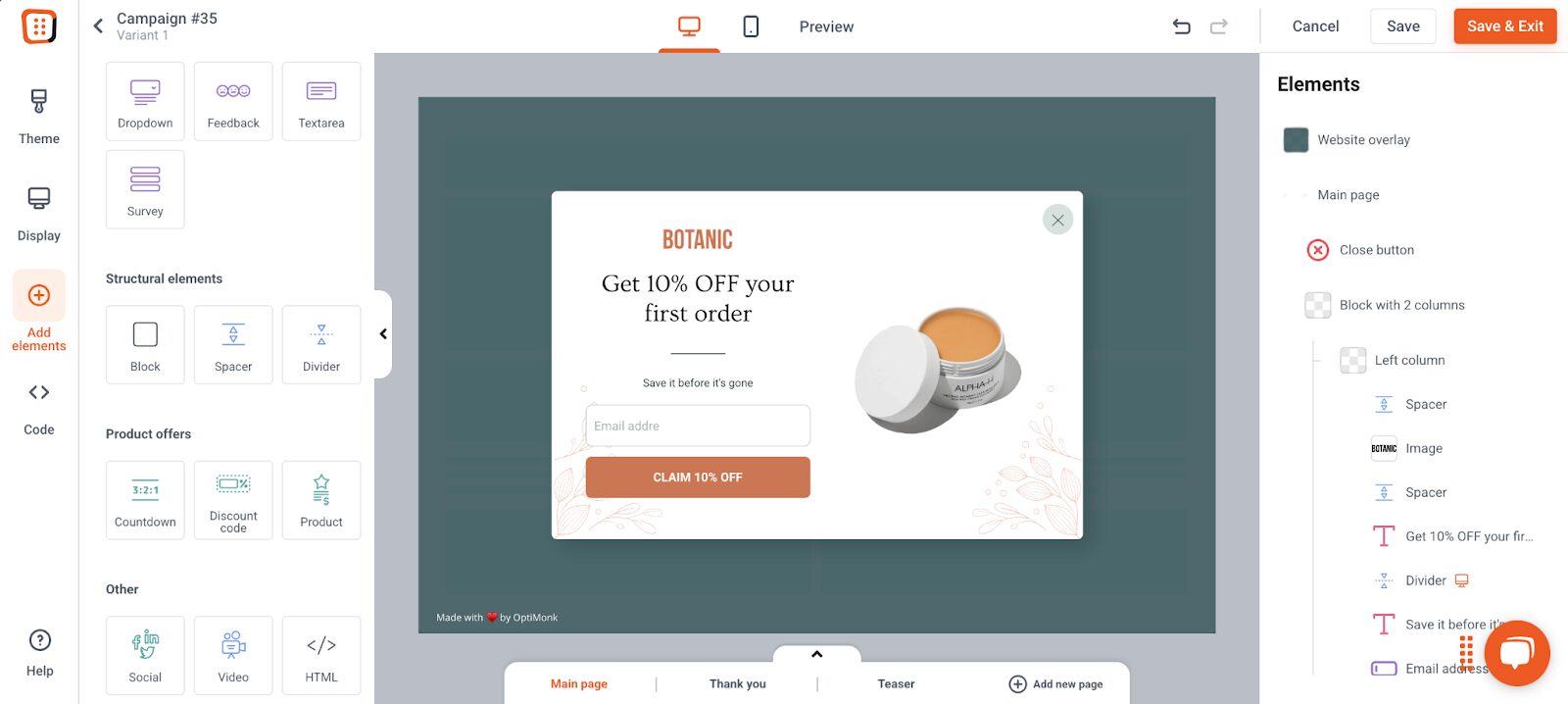
While you’re in the editor, you can choose between using a Unique or Fixed discount code.
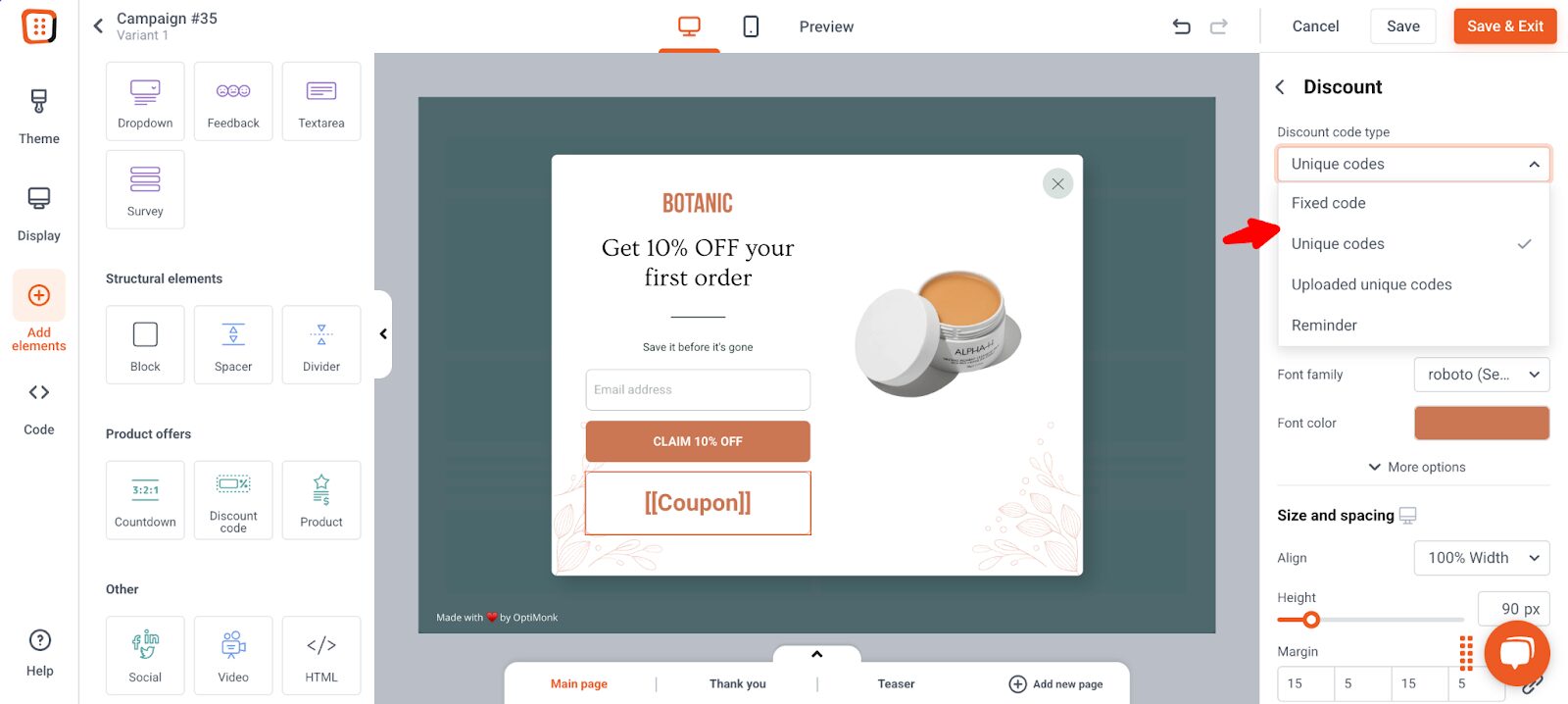
You also have the option to enable Discount Code Auto-Redeem. This way, if a visitor has previously seen a code, it will be automatically applied to their cart at checkout.
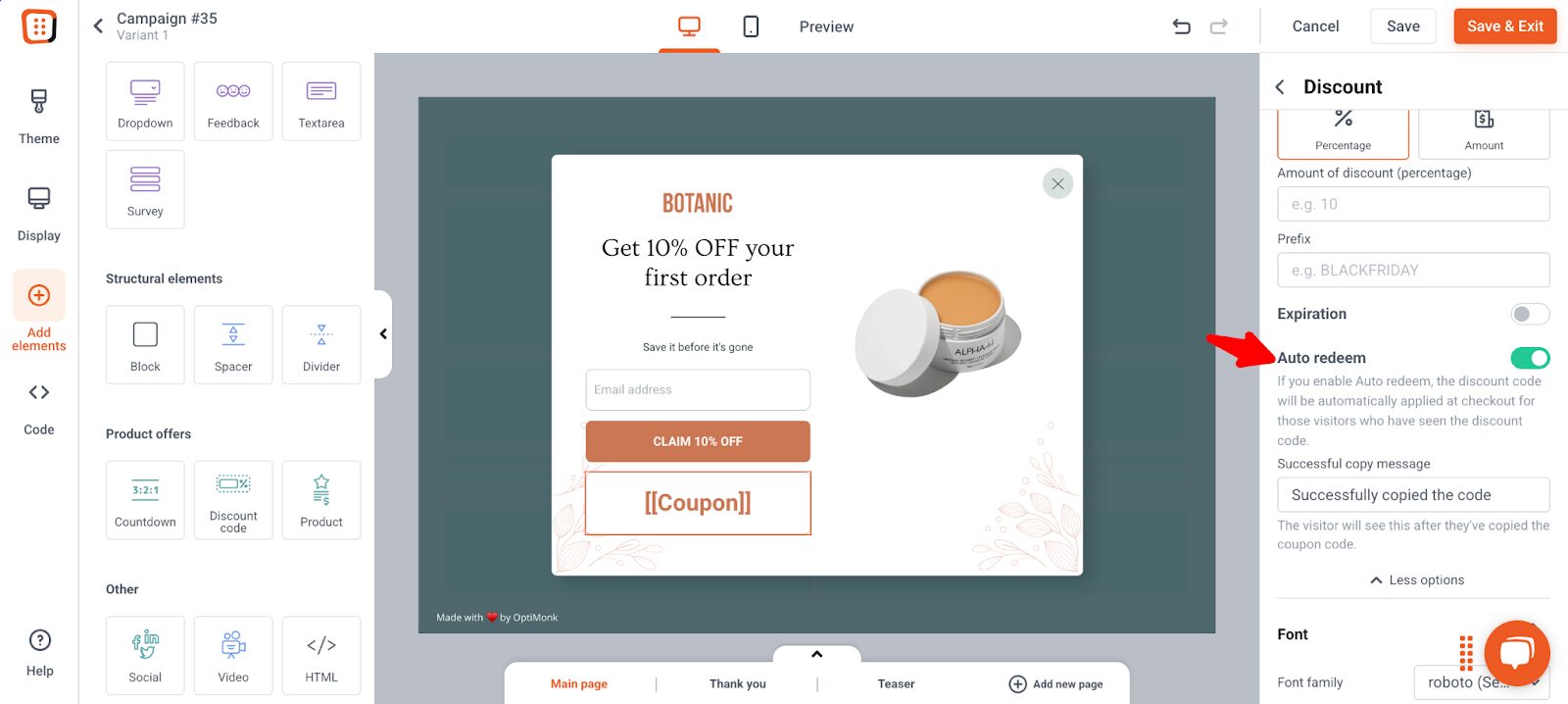
Step 3. Trigger and target
To maximize conversions, your discount should appear when it’s most likely to influence a purchase, and only to the right audience.
OptiMonk lets you control exactly when your popup appears, whether it’s triggered by exit intent, scrolling past a certain point, a time delay, or a click to a specific area.
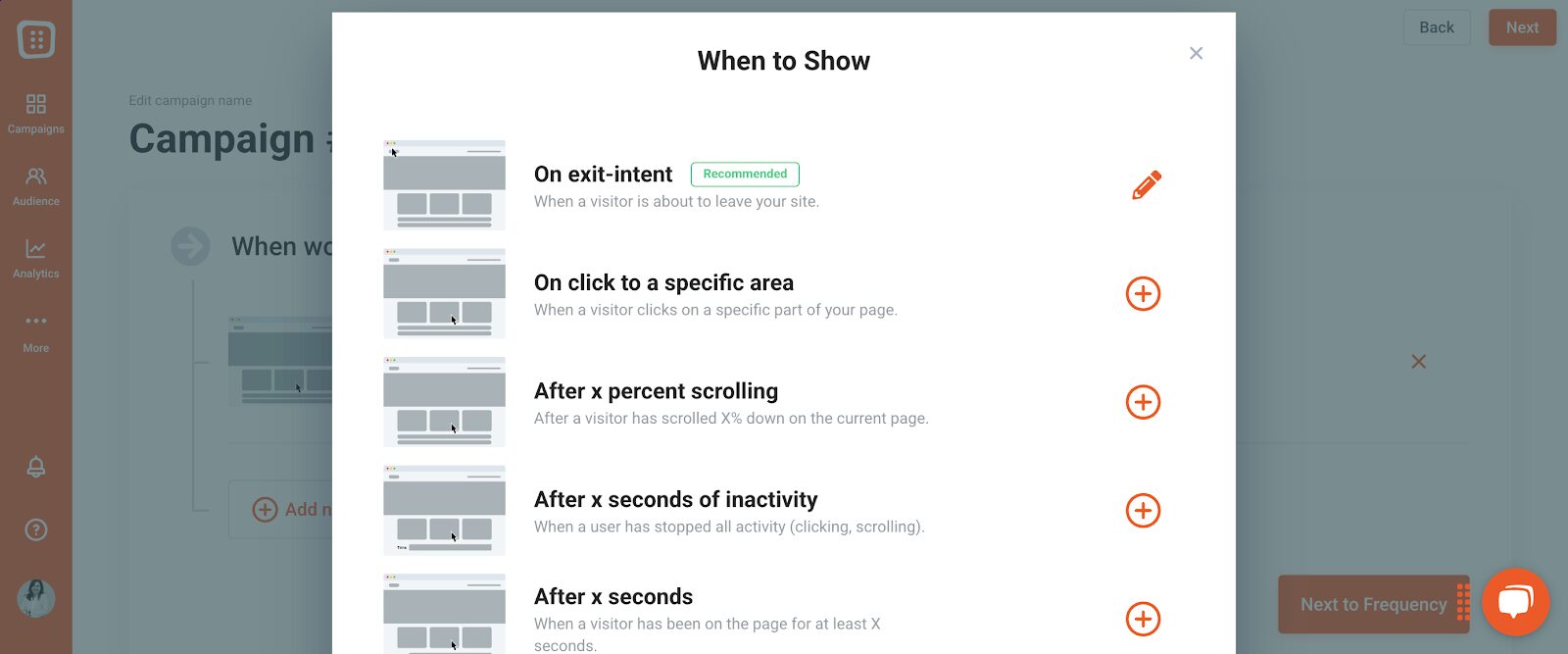
You can also define who sees it by targeting based on visitor behavior or profile, such as new vs. returning users, cart abandoners, or even by location and traffic source.
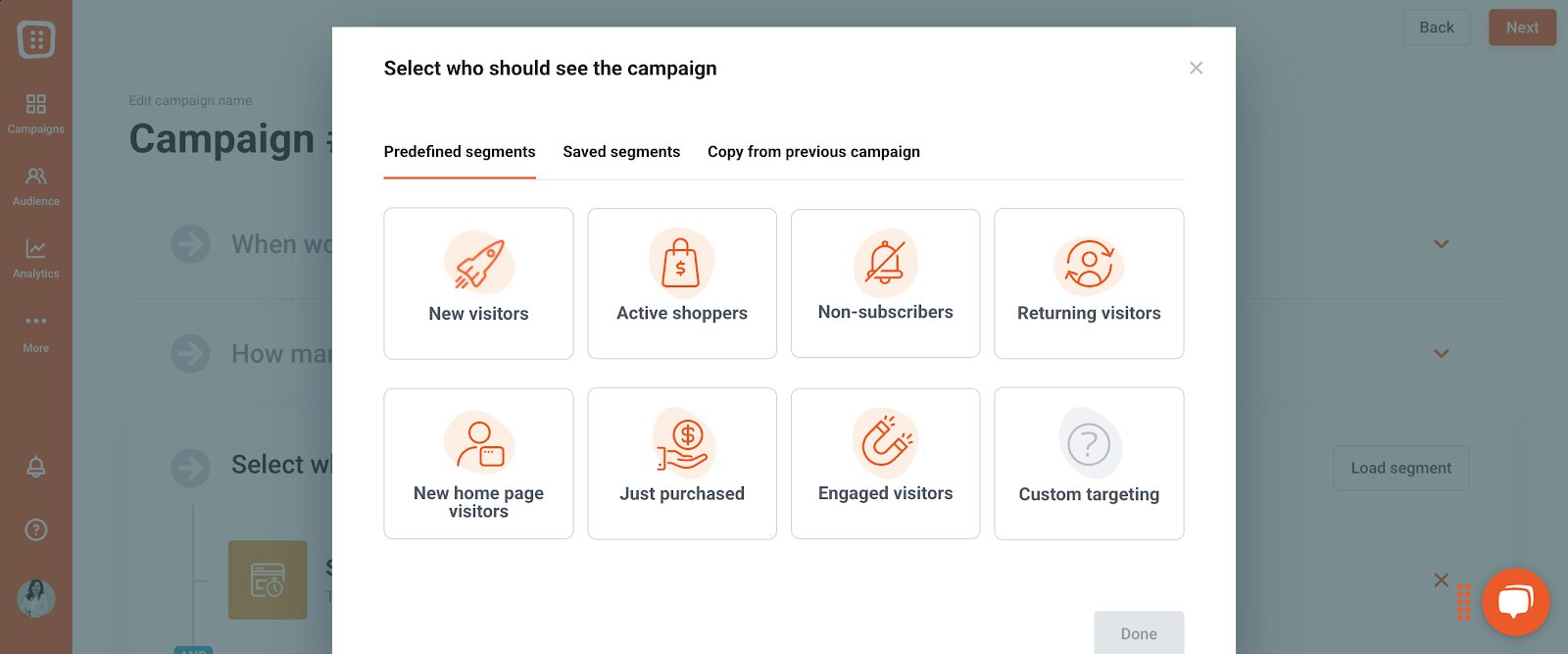
Step 4. Launch your popup
Once everything’s set, hit launch, and your discount popup goes live on your site. That’s it!
Step 5. Remind visitors to use their discount codes
You’ve set everything up, but visitors still aren’t using their codes?
A gentle reminder can make all the difference. Discount Code Reminder campaigns are a great way to nudge users about an active coupon they haven’t redeemed yet.
Use non-intrusive formats like sticky bars—they don’t interrupt the shopping experience but keep the discount visible and accessible when shoppers are ready to check out.
FAQ
Are there any downsides to using discounts?
Yes, when used too frequently, discounts can backfire. They may lower your perceived brand value or train customers to wait for the next sale instead of buying at full price. That’s why it’s important to use them strategically, paired with targeted messaging and limited-time urgency so they feel like a reward, not an expectation.
Can I A/B test different discount offers?
Yes! OptiMonk allows you to run A/B tests on your popups, so you can experiment with different messaging, designs, discount types, or triggers. This makes it easy to see what resonates best with your audience and continually improve your campaigns for higher conversions.
Can I personalize discount popups for different audience segments?
Yes, you can fully personalize your popups based on user behavior, location, traffic source, cart value, and more. For example, you can show a first-time buyer discount to new visitors while offering a loyalty reward to returning customers. Personalization helps make your offers more relevant, which leads to better engagement and higher conversion rates.
Wrapping up
Discounts work—but only when they’re relevant, well-timed, and aligned with your goals.
With OptiMonk, you can build personalized discount experiences that convert without feeling pushy. Whether it’s a first-time buyer offer or a mystery discount, you’re fully equipped to deliver the right message to the right audience at the perfect moment.
Migration has never been easier
We made switching a no-brainer with our free, white-glove onboarding service so you can get started in the blink of an eye.
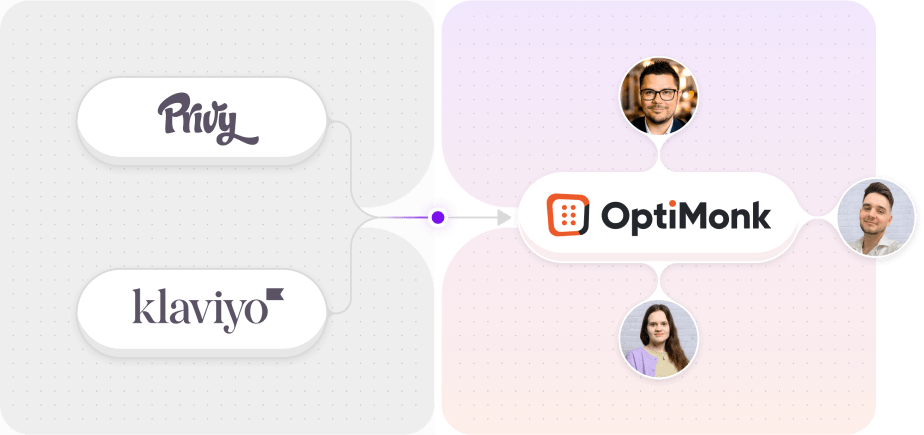
What should you do next?
Thanks for reading till the end. Here are 4 ways we can help you grow your business:
Boost conversions with proven use cases
Explore our Use Case Library, filled with actionable personalization examples and step-by-step guides to unlock your website's full potential. Check out Use Case Library
Create a free OptiMonk account
Create a free OptiMonk account and easily get started with popups and conversion rate optimization. Get OptiMonk free
Get advice from a CRO expert
Schedule a personalized discovery call with one of our experts to explore how OptiMonk can help you grow your business. Book a demo
Join our weekly newsletter
Real CRO insights & marketing tips. No fluff. Straight to your inbox. Subscribe now
Barbara Bartucz
- Posted in
- Ecommerce
Partner with us
- © OptiMonk. All rights reserved!
- Terms of Use
- Privacy Policy
- Cookie Policy













